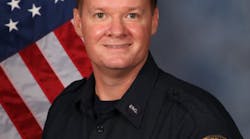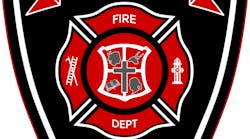Editor’s note: The National Institute for Occupational Safety and Health (NIOSH) Firefighter Fatality Investigation and Prevention Program conducts investigations of firefighter line-of-duty deaths to formulate recommendations for preventing future deaths and injuries. The program does not seek to determine fault or place blame on fire departments or individual firefighters, but to learn from these tragic events and prevent future similar events. NIOSH is a unit of the U.S. Centers for Disease Control and Prevention (CDC).
Firehouse® Magazine is pleased to join with NIOSH in presenting this valuable information. It is important to note that while some incidents that will be described here occurred several years ago, the information presented is valuable today. The accounts that follow are summaries of NIOSH investigations. The complete reports are available on the program website.
TEXAS
One Firefighter Dies and Another Is Injured After Partial Structural Collapse (Case F2002-07)
SUMMARY
On Feb. 11, 2002, a 42-year-old male firefighter (the victim) was killed and another firefighter was injured in a partial structural collapse while performing suppression operations at an apartment complex under renovation. The victim and three crew members were exiting the complex through a breezeway that connected the fire structure to an uninvolved structure when a section of brick veneer from the uninvolved structure collapsed onto the victim and the injured firefighter. The injured firefighter called for help and was freed by firefighters. A personal accountability report (PAR) was called and it was determined that the victim was missing. A second search found the victim unresponsive and without a pulse beneath a pile of bricks. The victim was extricated, given emergency medical treatment and transported to a hospital, where he was pronounced dead.
CAUSE OF DEATH
The cause of death was listed as multiple blunt-force injuries.
RECOMMENDATIONS
- Fire departments should establish and monitor a collapse zone to ensure that no firefighting operations take place within this area as part of defensive operations.
- Fire departments should ensure that an incident safety officer, independent from the incident commander, is appointed and on scene early in the fire operation.
- Fire departments should ensure consistent use of personal alert safety system (PASS) devices at all incidents.
DELAWARE
Assistant Chief Dies During Controlled-Burn Training Evolution (Case F2000-27)
SUMMARY
On April 30, 2000, a volunteer fire department prepared to complete a controlled-burn training evolution. At 7 A.M., the following volunteer firefighters gathered at the fire station to discuss their plan of action: the chief, assistant chief (the victim), captain, second rescue lieutenant, chief engineer, third assistant chief engineer and four firefighters. At 7:30, they arrived on the scene of a 2½-story farmhouse that they would use to complete the controlled-burn training evolution.
After completing their setup of laying out water curtains (a stream of water projected through a pipe to cool exposures) and hoselines, the firefighters walked through the structure to familiarize themselves with the layout. The chief, victim and second rescue lieutenant entered the front door of the structure and placed hay on the floor. The firefighters ignited the hay and completed the first training evolution by extinguishing the fire. The firefighters then completed three additional training evolutions (all the same) before taking a break. The firefighters then completed additional training using gasoline-powered saws to cut holes in the interior floors and porch roof.
The firefighters then regrouped and prepared to complete the last training evolution, which involved burning the structure from top to bottom. The victim, second rescue lieutenant, third assistant chief engineer and a firefighter proceeded to the attic of the structure (a room approximately 1,000 square feet with an eight-foot ceiling). The victim used a small liquid sprayer to spray diesel fuel on debris, which was spread throughout the attic. The second rescue lieutenant and the third assistant chief engineer struck a flare and ignited the debris in several places throughout the attic.
The fire quickly accelerated and all the firefighters in the attic, except for the victim, who was wearing full turnout gear and a self-contained breathing apparatus (SCBA), exited. The victim stated that he was going to stay in the attic to make sure that the fire was burning adequately. The fire intensified and smoke and heat started banking down the attic stairs. The chief and firefighters noticed that the victim did not exit and made several attempts to locate him. The captain and second rescue lieutenant were able to locate the victim, who was unconscious on the attic floor, but were unable to remove him. Shortly after, the attic roof collapsed, forcing the firefighters to make a defensive attack. The fire was eventually extinguished and the firefighters removed the victim, who was pronounced dead at the scene.
CAUSE OF DEATH
The death certificate listed the cause of death as asphyxiation and thermal burns. The victim’s carbon monoxide level was listed at 41%. (Note: Because of several factors – the length of time the victim was exposed to heat and fire, the collapsed debris and the severity of the damage to the SCBA – it is unclear whether the victim’s SCBA facepiece was removed, SCBA hoselines melted or if the SCBA malfunctioned. Due to the condition of the SCBA unit, no further evaluation could be completed. The SCBA was new and the victim had been using it prior to this incident. No problems with the SCBA were reported by the victim in the past or throughout the entire training operation.)
RECOMMENDATIONS
- Fire departments should ensure that flammable or combustible liquids as defined in National Fire Protection Association (NFPA) 30 not be used in live-fire training.
- Fire departments should ensure that proper ventilation is in place before a controlled burn takes place.
- Fire departments should ensure that fires not be ignited in any designated path of exit.
- Fire departments should ensure that an evacuation signal is communicated to all firefighters prior to ignition.
- Fire departments should ensure that a building evacuation plan is in place and all firefighters are familiar with the plan.
- Fire departments should ensure that a method of fireground communication is established to enable coordination among the incident commander (IC) and firefighters.
- Fire departments should ensure that a safety officer is appointed for all live-fire training.
- Fire departments should ensure that each firefighter is equipped with full protective clothing and a SCBA.
- Fire departments should ensure that backup personnel are standing by with equipment, ready to provide assistance or rescue.
- Fire departments should ensure that only one person be assigned as the “ignition officer” and it not be a firefighter participating in the training.
- Fire departments should ensure that exterior fire attack is at a minimum during search and rescue.
- Fire departments should ensure that firefighters who enter a hazardous condition enter as a team of two or more.
FOR FURTHER INFORMATION
If you have any questions regarding the NIOSH Firefighter Fatality Investigation and Prevention Program, please contact:





